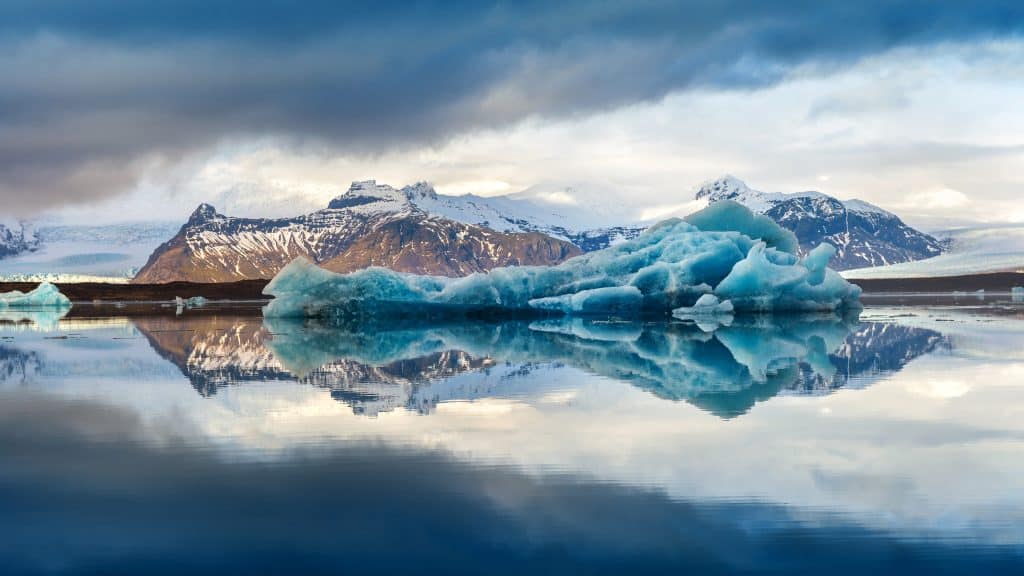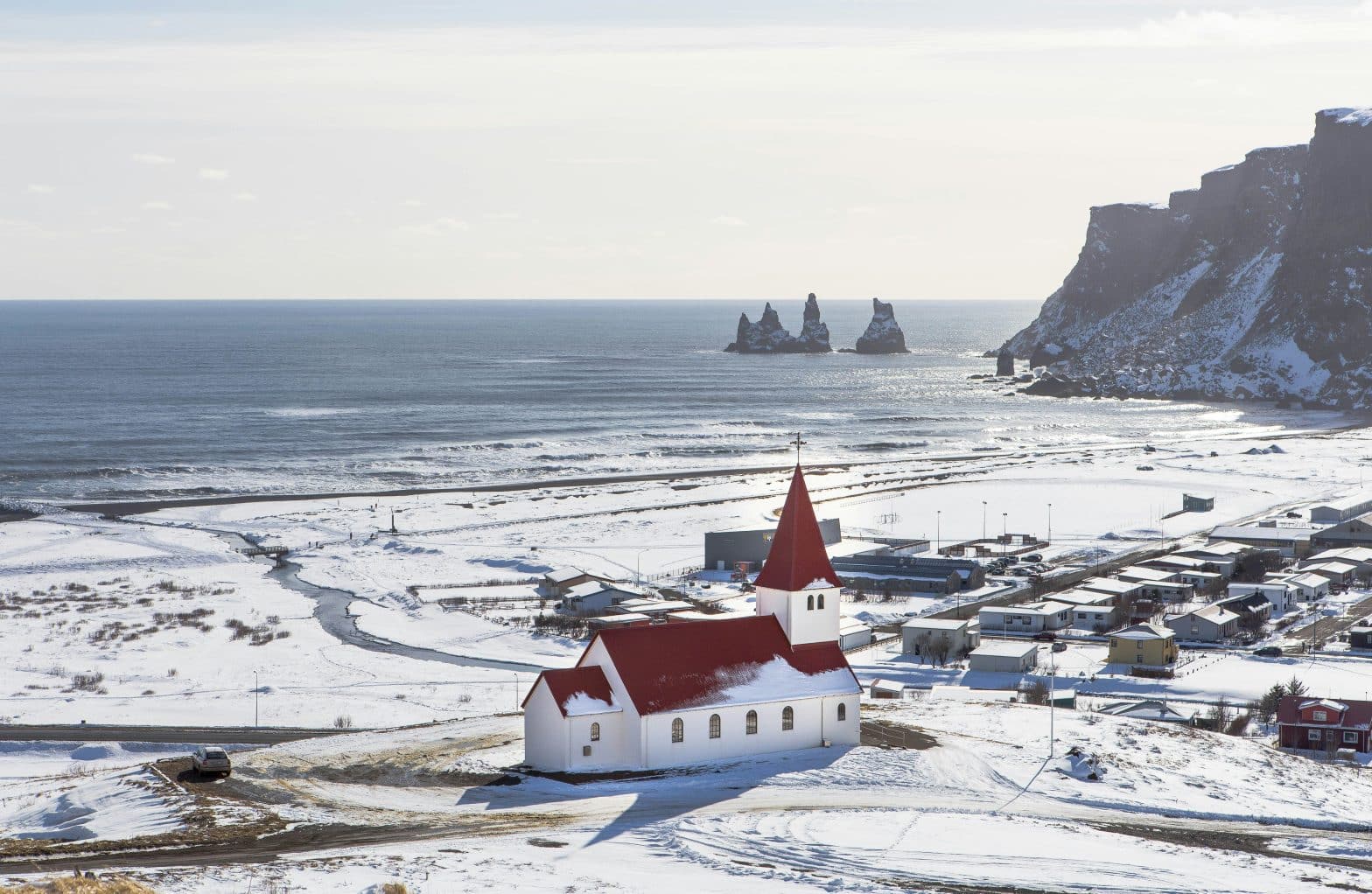Iceland attracts many expats every year, whether for business or pleasure, charmed by its unique landscapes and dynamic lifestyle. However, one fact often goes unmentioned: the cost of living in Iceland is one of the highest in Europe. It is therefore essential to plan your budget carefully.
To help you prepare for your move and avoid any unpleasant financial surprises, here is a comprehensive guide to the cost of living in Iceland. Accommodation, food, transport, healthcare … let’s get started!
Overview of the average cost of living in Iceland
According to the latest figures from Numbeo, a single person living in Iceland needs a budget of €3,100 per month, and a family of four needs €7,600 per month.
These averages include all major expenses, namely housing, groceries, transport, healthcare, education and activities (restaurants, cinema, etc.).
| Average monthly salary | €6,300 |
| Average rent for a studio apartment in the city centre | €1,500 to €2,300 |
| Purchase price of an apartment per square metre | €6,500 |
| Petrol (1 litre) | €2 |
| Mobile phone plan (calls + 10 GB of data) | €25.50/month |
| A cappuccino in a café | €5.15 |
| Gym membership | €72 |
Why is Iceland one of the most expensive countries in Europe?
There are several reasons for the high cost of living in Iceland. First, Iceland’s geographical isolation means that most products are imported by air and sea, which is quite expensive.
With a population of around 400,000, Iceland’s market is very small, which also forces businesses and retailers to raise their prices to remain profitable.
Not to mention the sometimes high tax rates. For single people without children, it is the second highest in Europe.
Icelandic currency and exchange rates
The official currency in Iceland is the Icelandic króna, abbreviated to “ISK” and symbolised “kr”.
Currently:
- 1 ISK is equivalent to 0.0070 EUR, or 143 krónur to 1 euro.
- 1 ISK is equivalent to 0.0082 USD, or 122 kronur for 1 US dollar.
(Indices as of 16 August 2025).
The exchange rate of the Icelandic krona may fluctuate slightly during the year. Therefore, be sure to check the rate before making any transactions.
Accommodation in Iceland
Accommodation is a significant part of the cost of living in Iceland. The budget you will need depends on the type of accommodation you choose and its location. Here are the average prices in Reykjavik:
Rent:
- Studio in the city centre: ISK 275,000 (EUR 1,900)
- Studio on the outskirts: ISK 248,000 (EUR 1,730)
- Three-bedroom flat in the city centre: ISK 395,000 (EUR 2,760)
- Three-bedroom flat on the outskirts of the city centre: ISK 338,000 (EUR 2,360)
Purchase:
- Price per square metre in the city centre: ISK 930,000 (EUR 6,500)
- Price per square metre on the outskirts of the city: ISK 790,000 (EUR 5,500)
Rents outside the capital are slightly cheaper, but the vast majority of expats choose to settle in Reykjavik, mainly because of its economic dynamism and pace of life.
Food budget for Iceland
Food in Iceland is quite expensive and is the second largest expense after housing.
This is partly due to the fact that most products are imported and the Icelandic climate does not allow for much local production.
To give you an idea of prices, here are the average costs of some basic products:
| Food | Average price in Iceland (in euros) |
| Carton of milk (1 litre) | €1.70 |
| Bottle of water (1.5 litres) | €1.95 |
| Bread (500 g) | €3.60 |
| Dozen eggs | €5.60 |
| Chicken fillets (1 kg) | €22 |
| Meat (1 kg) | €37 |
| Potatoes (1 kg) | €3.15 |
| Tomatoes (1 kg) | €4.30 |
| Onions (1 kg) | €2 |
| Head of lettuce | €2.70 |
| Apples (1 kg) | €2.85 |
| Bananas (1 kg) | €2.15 |
| Bottle of imported beer | €2.75 |
| Bottle of red wine (mid-range) | €21 |
Transport
Bus: the national company Strætó operates most routes. In Reykjavik, a single ticket costs ISK 670 (€4.70) for adults and ISK 335 (€2.35) for passengers aged 12 to 17. You can also opt for a 30-day pass for ISK 11,200 (€78) per adult and ISK 5,600 (€39) per child, teenager or student.
Taxi: the basic fare for a journey is ISK 787 (€5.50) and ISK 322 (€2.25) per kilometre travelled.
Car: the price of a litre of petrol is € 2.18 for drivers wishing to travel by car.
Ferry: expect to pay an average of ISK 4,500 (€31.40) per boat trip. Prices vary depending on the season.
Air: There are many domestic routes and the price of a plane ticket depends on the distance and the airline (Icelandair, Norlandair or Eagle Air). For example, for a return flight from Reykjavik to Gjogur in low season with Norlandair, expect to pay an average of ISK 13,800 (€96).
| Medical services | Price with local health insurance | Price without local health insurance |
|---|---|---|
| Doctor’s consultation | 500 ISK (3.50 EUR) | 12,900 ISK (90 EUR) |
| Home medical consultation | 3,400 ISK (23.75 EUR) | Varies depending on the doctor |
| Physiotherapy | Covers up to 90% of the price | Varies depending on the treatment |
| Maternity care | Free | 12,973 ISK (90.60 EUR) |
| Childcare | Free | 12,973 ISK (90.60 EUR) |
The Icelandic healthcare system is based on universal health insurance for all residents, including expatriates.
However, many expatriates choose to take out additional private health insurance to avoid waiting times and cover certain treatments that are not covered, or only partially covered, such as dental care.

International private health insurance, such as that offered by Foyer Global Health, offers several advantages for expatriates:
- Valid in Iceland, in your country of origin and anywhere else in the world
- Freedom to choose your healthcare provider and avoid long waiting times
- Multilingual assistance 24/7
- Online second medical opinion service
- And additional wellness services, such as a fitness programme or mental health coaching!
Education in Iceland
If you are planning to live in Iceland with children, you should know that education is free until they enter university. You can therefore choose to enrol your children in one of Iceland’s many public schools.
You can also opt for private schools, in which case you should budget for the following:
- For nursery school, expect to pay between ISK 25,000 and ISK 35,000 (€175 to €275) per month
- For primary school, the budget is ISK 802,000 (€5,600) per year
- For secondary school, expect to pay ISK 45,000 to 50,000 (€315 to 350) per year, as at the prestigious Landakotsskóli school (the oldest in Iceland).
Leisure and activities
- Go swimming in one of Reykjavik’s public swimming pools (a must!): free for children under 15, ISK 210 (€ 1,50) for teenagers aged 16/17 and ISK 1,380 (€9,65) for adults.
- Attend an event at the famous Harpa concert hall at least once: prices vary depending on the performance. For example, you can attend the Christmas concert from 13 December 2025 for between ISK 3,990 (€28) and ISK 4,900 (€34) per ticket.
- Spend a day at the Blue Lagoon, Iceland’s most famous spa: admission from ISK 10,000 (€70) Visit the Einar Jónsson Museum: ISK 1,500 (€10.50) per adult and free admission for children
- Relax in the natural (and impressive) baths of Mývatn: ISK 7,400 (€51.70) per adult, ISK 3,600 (€25) for teenagers and free for children under 12
- See the Northern Lights: it’s free in principle! You just need to find the right spot.
Cost of living in Iceland compared to other European countries
Compared to the United Kingdom
The cost of living in the United Kingdom is nearly 34% lower than in Iceland. However, this difference changes completely when comparing the cost of living in Reykjavik and London. The British capital, with its high rents, is more expensive than the Icelandic capital.
For example, while the rent for a studio apartment in the city centre of Reykjavik is €1,900 per month, it is €2,550 per month in London.
Compared to Norway
While a person needs to budget €3,100 per month to live in Iceland, the budget is €2,300 in Norway. The cost of living in Norway is therefore lower.
It should be noted that the average Norwegian salary is lower (€4,000 on average, compared to €6,300). However, overall, purchasing power is almost the same in both countries.
Compared to France
The cost of living in France is up to 64% lower than in Iceland. All items of expenditure are lower, particularly rent and the price of meals in restaurants. It should be noted that the difference in the cost of living is reduced to 25% when comparing Paris to Reykjavik.
However, here too, the purchasing power of residents in France and Iceland is almost the same.
